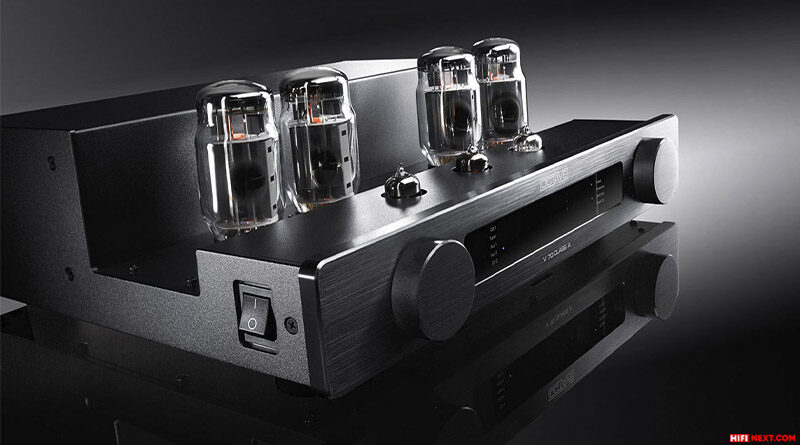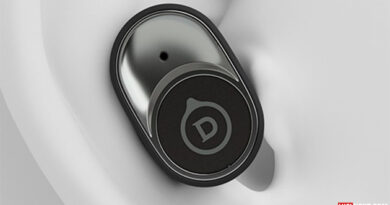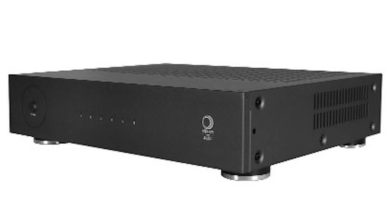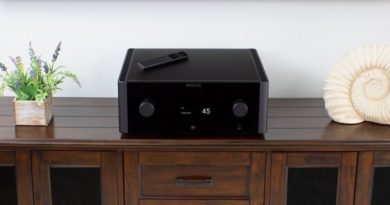Octave V70 Class A Review
Octave V70 Class A belongs to the line of integrated amplifiers of the German manufacturer Octave, and is interesting primarily because, with relatively modest dimensions, it has a decent power, and besides, it is not the most ordinary circuitry in class A. Generally speaking, Octave amplifiers are famous for the fact that they can quite easily work with “non-tube” acoustics – and this is not necessarily a story about sensitivity under a hundred and all kinds of horn designs.
To begin with, it should be said that Octave, in principle, are not quite typical amplifiers. Yes, they are tube devices, but in many characteristics, primarily sound, they are not similar to archetypal tube devices, and have never been similar.
Andreas Hofmann, founder and chief developer, sees his devices differently. Less coloration, less of the deliberate lamp-like quality that many vintage amplifiers are known for, and not only amplifiers. And it’s better when there is none at all – the distortion does not color the sound. In addition to this, there is usually quite a lot of power and the ability to work with complex acoustics. These are the initial data.
Contents:
- Tubes
- Optional capacitor battery
- Octave V70 Class A In atypical conditions
- Restraint and proportionality in sound
- Conclusions
- Specifications
Now let’s move on to studying a specific model – Octave V70 Class A.
Outwardly, the device is not bulky at all – perhaps it is even smaller in size than many of its classmates. With a mass of 23 kg, most of the weight falls on the transformers, which the manufacturer has its own – and the manufacturer has every reason to be proud of their quality.
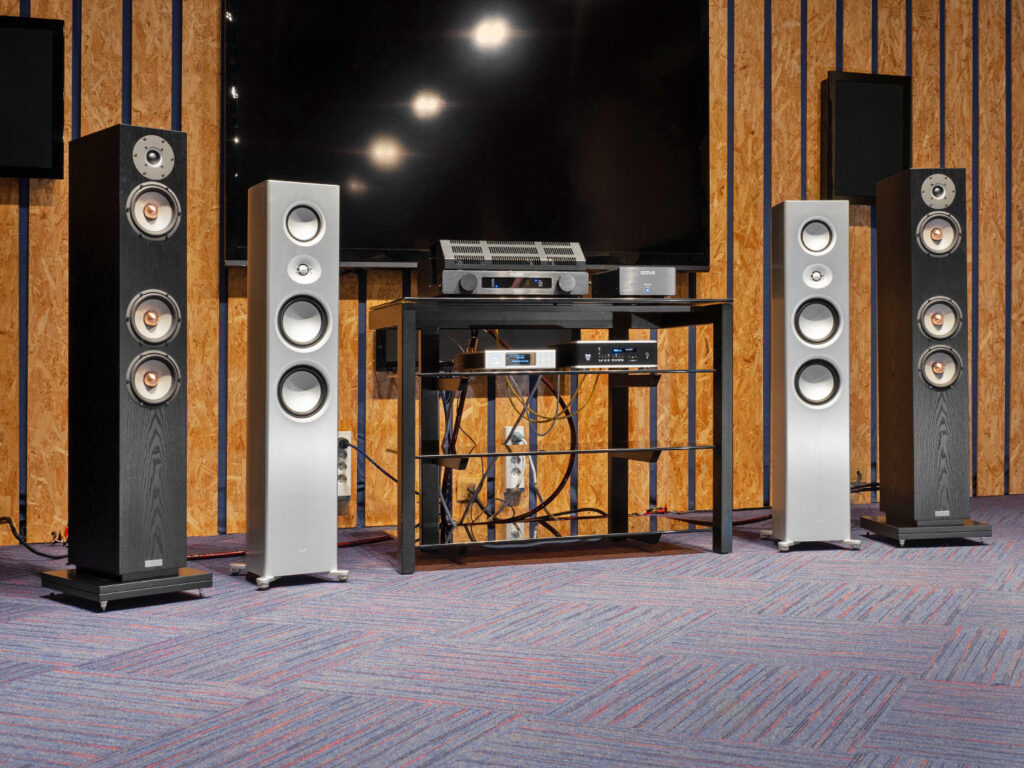
The laconic body is absolutely not associated with any vintage technique. Rather, on the contrary, there is a certain technical minimalism here without any time or stylistic reference. Of the specific features, I will mention only the protective lamp casing – with it the device looks much more brutal. If you remove it, the design will visually become light. But there is one significant plus – the casing, fastened with several screws, really protects in every sense.
Tubes
The design, circuitry and functionality of the device contain several unusual, far from common solutions. First, the device can work with different types of lamps. The user has a choice of modes: a switch on the rear panel “Power High” or “Low”.
The position of the switch is selected depending on the type of lamps used. With KT88 or 6550 lamps, that is, in “Power Low” mode, the device will produce about 15 W (25 W peak). And if you put KT 120 or KT 150 lamps and switch to “Power High”, then the output will already be 50 W long-term or 70 W peak – 4 Ohms when using the optional Super Black Box capacitor module.
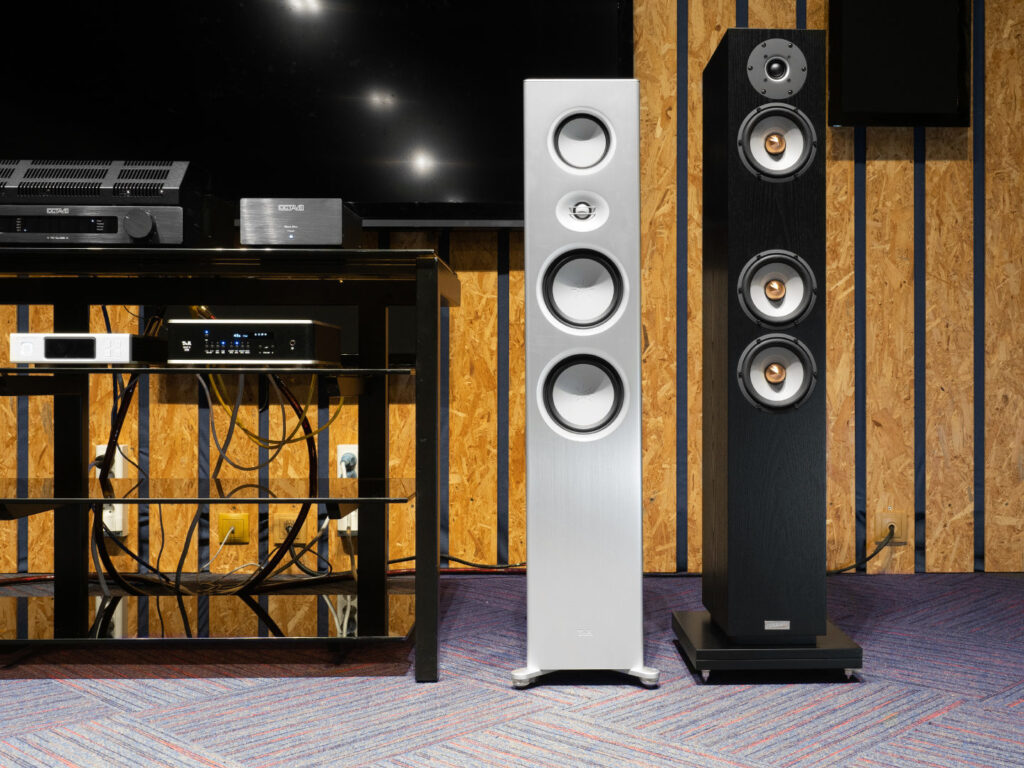
According to the scheme and principle, the Octave V70 Class A is a pentode push-pull amplifier operating in class A. Well, the dynamic auto-bias of the lamp currents logically suggests itself. From the point of view of the idea, everything is more or less clear – the manufacturer wanted to combine the capabilities of the output power of the push-pull device with the distortion level of a single-cycle one in class A.
Sometimes similar ideas are found among manufacturers of tube technology and even among some manufacturers of transistor technology – when combining the capabilities of different classes with a low level of distortion. How did it happen in this case – let’s listen together with “non-tube” acoustics and a good highrez source.
Optional capacitor battery
It is immediately clear that the functionality of the device is wider than that of an average tube amplifier. There is a balanced input – apparently a full-fledged transformer, and not just wiring for an XLR connector.
There is also the possibility of installing an optional MM- or MC- (transistor) phono stage, there is a pass-through channel for integrating the device into a multichannel system and a pre-amplifier output, which the manufacturer suggests using to connect a subwoofer.
Plus there are four line inputs, not counting the optional equalizer. A remote control of an extremely simple design is also provided – it has only two buttons for adjusting the volume.
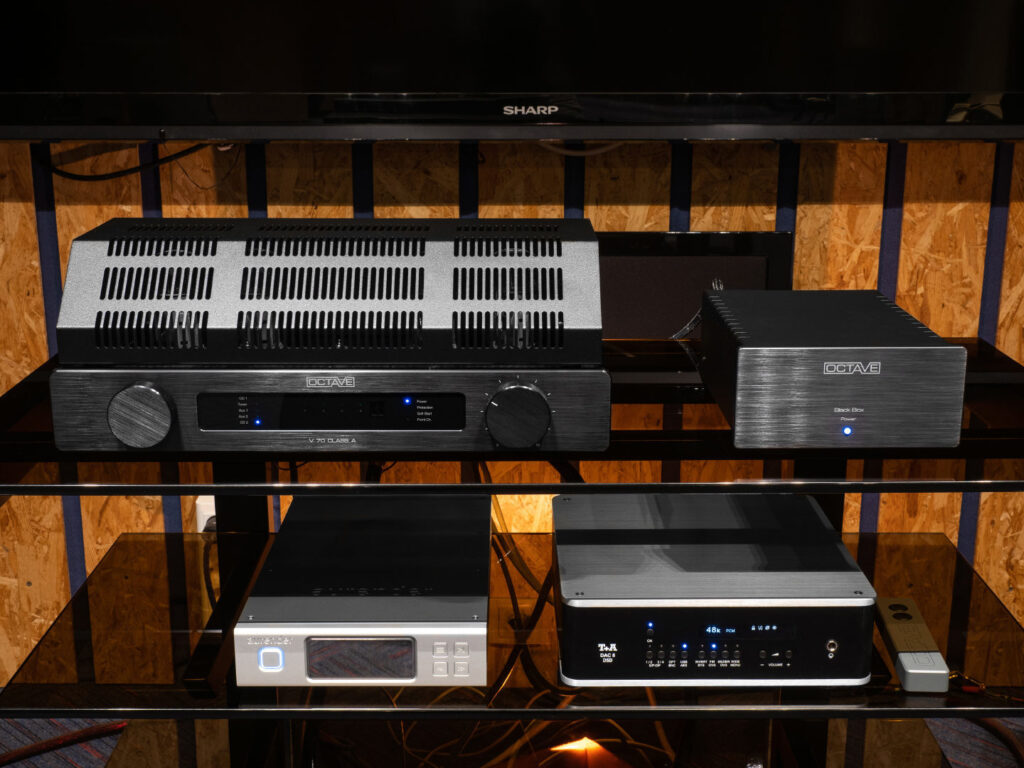
A very unusual feature is a connector for a Black Box or Super Black Box module. In fact, it is a capacitor battery: the Super Black Box has a larger capacity, while the Black Box has a smaller one. In our case, a younger unit is installed.
An eco-mode is also provided. From the description, it reduces power consumption when idle. However, it seems to me that if this is critically important, it is more logical to look for a device with a different circuitry. If you need a tube device, I turn off all the “optimizers”.
The lamps in our device are standard. In this case, these are JJ lamps. At the output of the amplifier are KT 120 tubes.
Octave V70 Class A In atypical conditions
As for the test system, it was assembled to create atypical conditions for tube amplification. Acoustics – Penaudio Serenade Signature as the main pair and T+A Talis S 300 as an additional. In both cases, the sensitivity was 87 dB, and the passport impedance was 4 Ohm.
Source – T+A Dac 8 DSD DAC and Aurender N100H digital player for kit. However, during the test, I used Tidal streaming and familiar releases from its list, and used Roon as program control (with off correction and additional software processing). The cable tie in the system is Van den Hul, level closer to the upper third of the model range.
Literally from the first test tracks, you can notice a fairly clearly outlined character of the sound. The emphasis here is not so much on scale – after all, it needs a smaller room – but on speed and detail. At first, there is not even any hint of warmth in the sound or some imposing presentation – everything is fast, emphatically neutral and very legible.
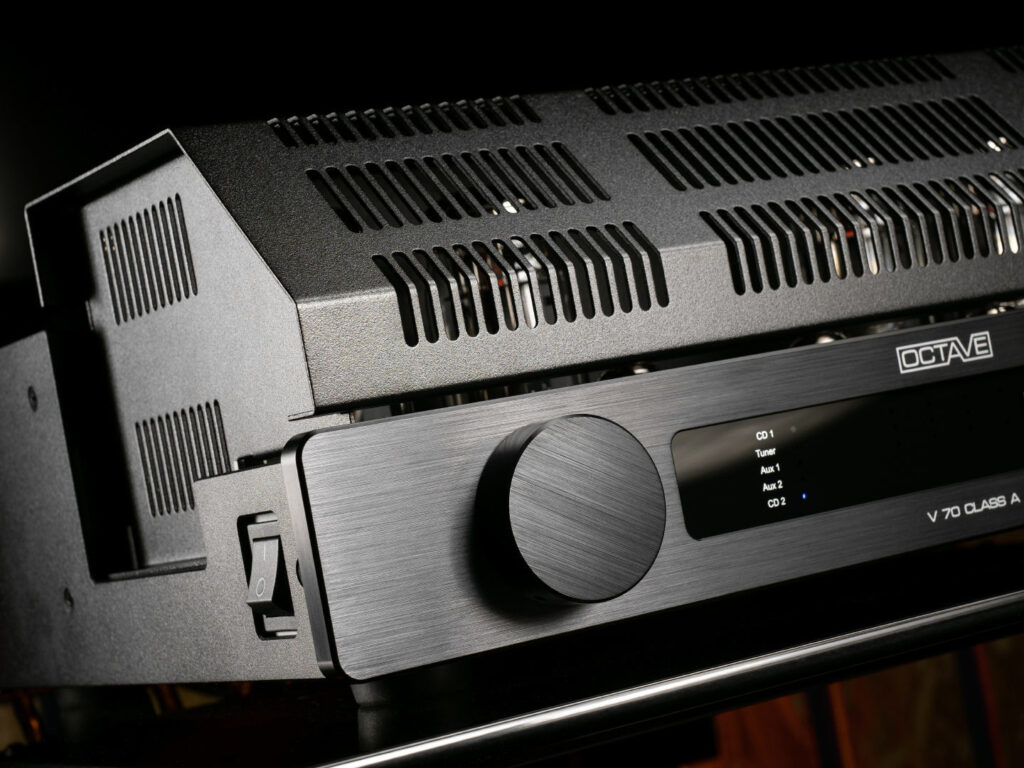
The first album in the test is Pat Metheny’s “Road to the Sun”. There are absolutely no problems with dynamics, when speed is needed – it is there. But smoothness is also present: the main sounds do not stumble and do not overlap the desired length of after-sounds.
There is enough air and the localization of the scene is very accurate. By its nature, the presentation is very analytical, accurate and detailed. Although I did not notice the accentuated holographic, prickly, or brightness. It seems to be in detail and even in places strictly, but this does not become the main, dominant characteristic.
Emotions are conveyed very well: tense moments are replaced by clearly readable relaxation, exhalation. But all this is quite related to the music, and not dictated by the handwriting of the test system. Everything in general is perceived both emotionally and restrained equally.
And there is also a well-pronounced “tactility” of sounds. With not the deepest bass and a generally flat lower part of the range, even small secondary sounds are textured, voluminous and tangible.
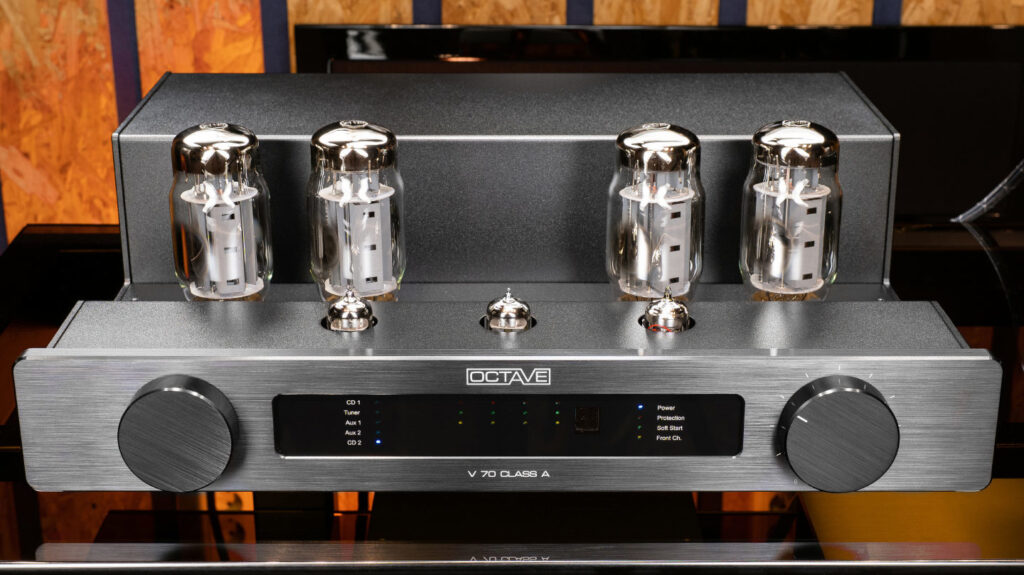
The next entry is Willie Nelson’s “That’s Life”. There is a good fullness of the scene, spatial layout, airiness, decent resolution. With a moderate overall scale, the stage as a whole and the vocals are quite proportionate – there is neither bloat nor miniaturization.
The sound is dominated not by density or density, but by detail, airiness and a good study of after-sounds. The bass is not dominant, but it is present surprisingly confidently – this is important given the acoustics design and the size of the room – and there is no slump or control issues.
The middle of the sound is flat, not bulging, there is no hint of a lack or obvious smoothness of the high frequencies. Everything is in abundance and in decent quality. Emotionally, the sound is not constricted, but restrained and accurate. And no obvious warmth. However, coldness too – closer to neutral.
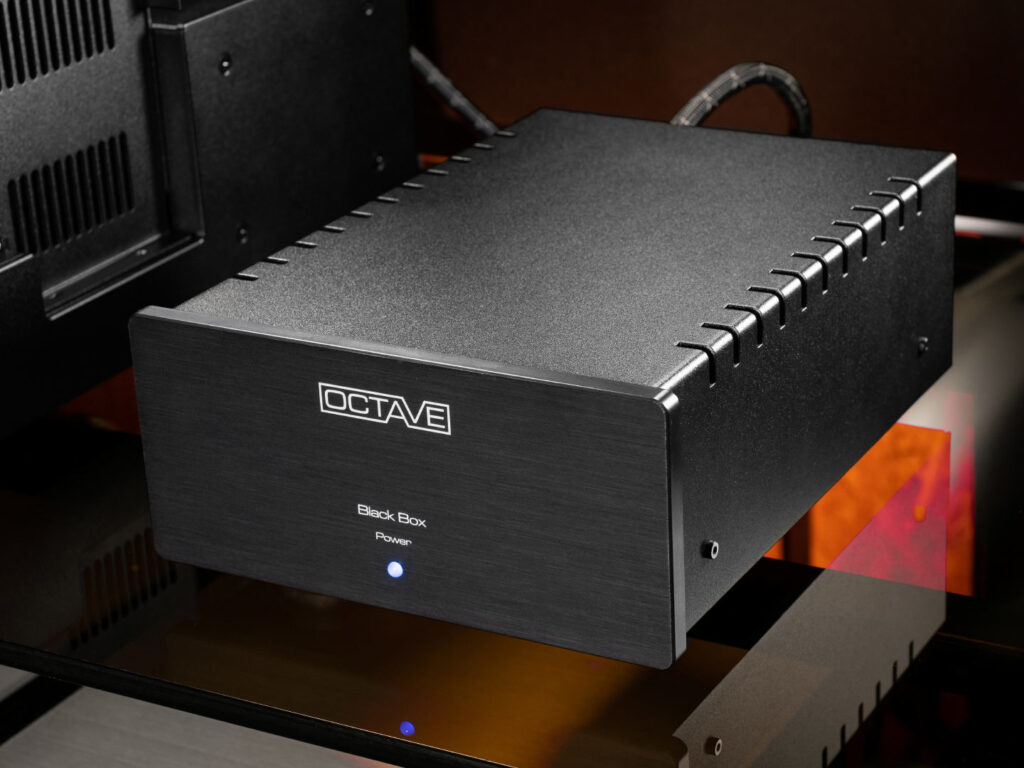
To test it, I turned off the Octave Black Box and found about the same thing as with other Octave amps. Smaller sound scale, slightly smoothed attack and slight emphasis on the midrange. In general, the additional capacitor capacitance is clearly not superfluous here.
However, it depends very much on acoustics. If you take something lighter for the buildup, with greater sensitivity and higher impedance, then you may well not experience any additional need.
Restraint and proportionality in sound
Then he put on the Chromatics album “Closer to Gray”. Here you can draw conclusions literally from the first thing. The cover of “The Sound of Silence” is played with bass more suitable for the dance floor than for listening in the usual sense. Viscous, congested bass peaks that can be challenging for many systems.
In our case, the “volume” of the bass is somewhat reduced, but everything is in order with the control. This viscousness of the bass, in principle, corresponds to the author’s idea, but technically no problems are heard.
And most importantly, all parts of the range are proportionate, there is good detail everywhere. There is no sharpness or brightness, but there is none on the record. The sound is a little dark and gloomy.
Everything is transmitted quite accurately and accurately. Maybe a little more restrained in emotions than we would like, but in this case it is more appropriate to talk about the entire system – the same used T+A Dac 8 DSD DAC certainly does not play warm or colored.
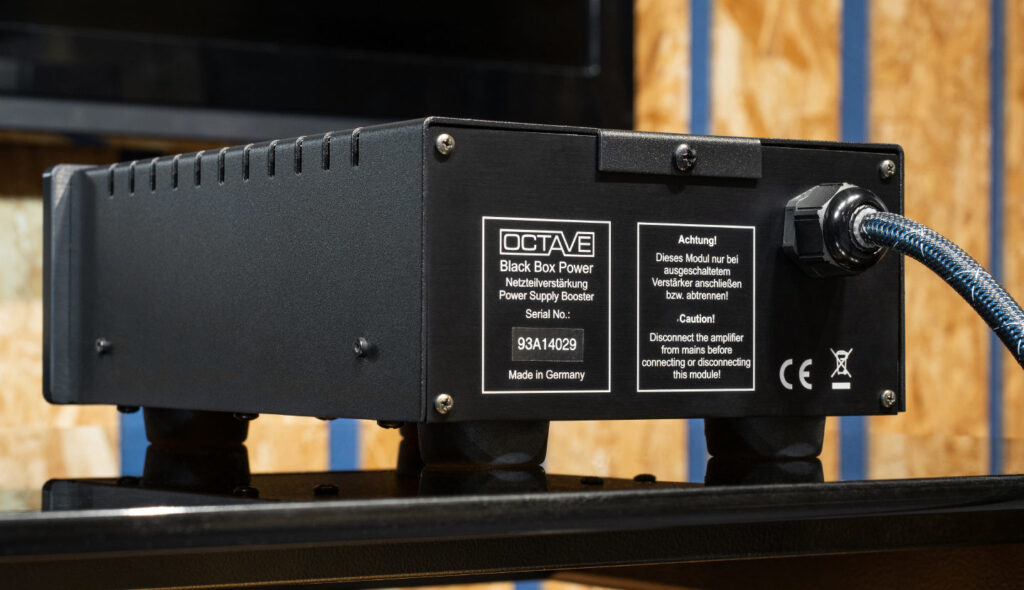
Moving on to the next album – Korn “The Nothing”. Very decent in detail and dynamics, but not evil and tough enough in general. That is, there seems to be rigidity, and the tonal balance is conveyed honestly, but emotionally everything is somewhat more restrained than I personally would like. At the same time, the formal intelligibility of the music is very good – and from this point of view, listening is frankly interesting.
The upper bass – that part of the range that mostly threshes – played out correctly, in detail and with an almost tactile feeling of attack. But still, the presentation on the example of this entry is more conservative than we would like. But analytical, but without trying to disassemble the music into sounds and after-sounds. So in general – everything is very interesting, especially adjusted for tube gain.
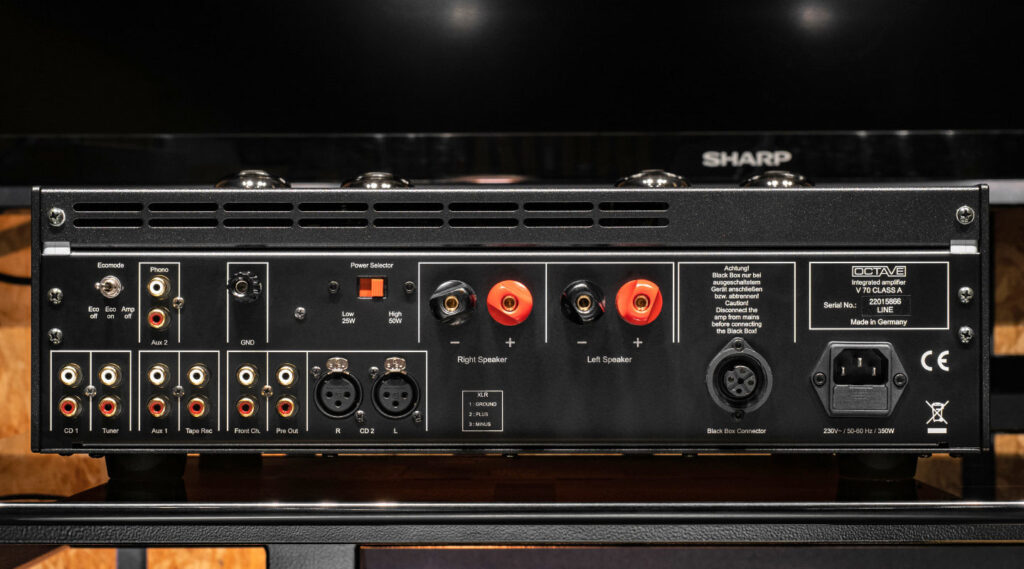
Another genre change – listened to Cecilia Bartoli’s recording “Maria”. Of course, very decent detail, good accurate dynamics, high natural correct layout of the scene. Emotionally restrained. Not squeezed, but just restrained. This is at the level of nuances of “reading” the recording by the technique – but again, there is also the contribution of other participants in the system.
For the experiment, I replaced the acoustics with a T+A Talis S 300, although the general “mentality” of both pairs of acoustics is similar. After the replacement, I heard a slightly more energetic power delivery, pronounced severity of the sound, distinctly and maybe even slightly harshly traced high frequencies and a large attack in the upper middle.
And the difference in arrangement in our case is not significant: after all, the main question here is the amplification and the amplifier’s ability to work with a complex load. And also do not overlap with their nature the features of other components in the system. This is paramount. And here everything is quite obvious.
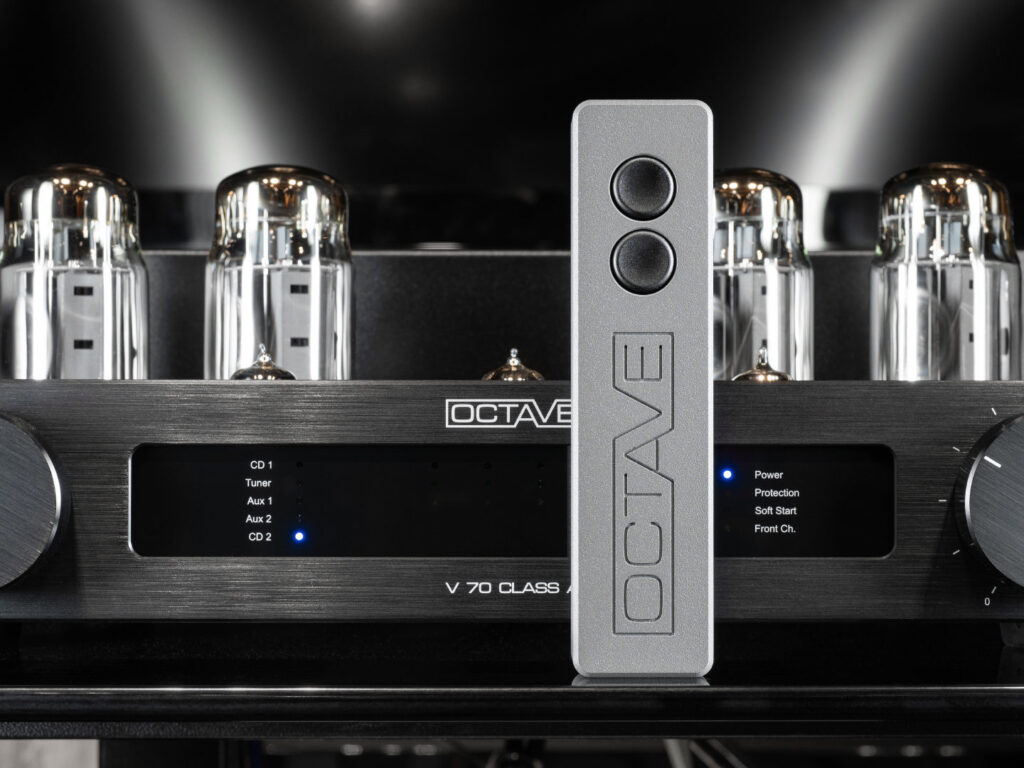
Finally, I included a recording of some of Beethoven’s works performed on two pianos by two musicians. Perhaps, it was this recording that I liked more than any other.
Proportionality, a sense of rhythm and a sense of time, good rhythm and balance between the main sounds and their decay. You listen – and you literally follow two parts performed simultaneously by Martha Argerich and Theodosia Ntokou.
Slenderness and severity are also out of place here. But besides, the result was uniformly confident over the entire sound range. The conventional scale of the instruments on the recording did not skew – everything sounded smooth and natural.
Conclusions
The tube nature of the amplifier is secondary: if the device produces an honest accurate sound without obvious coloration, what’s the difference what its circuitry is. In our case, it is definitely a good device. And how its creators achieved this is another question.
Matching, is also more important than formal issues like the names of lamps. In our case, the compatibility with the acoustics, formally very problematic for tube amplification, turned out to be quite good. And this is just a small integrated amplifier weighing 23 kg, not weighty monoblocs. In simpler conditions, you can get a different sound – the amplifier was not noticed in any color, which is especially commendable for a tube apparatus.
Finally, a little practical note. It is better to change the stock lamps – first of all, the lamps of the input stage. Further – everything to taste. The device is able to respond to even minor changes in the system.
Specifications
Output power into 4ohms: 2x50W (continuous), 2x70W (peak)
Frequency response: 20Hz – 70kHz at 50W (-1/-3dB)
Harmonic distortion: less than 0.1% at 10W/4Ohm
Channel Separation: 55dB
Input Separation: -105dB Signal to
Noise Ratio: 100 dB/50W
Load Impedance: 4-16Ohm
Dumping Factor: 5 to 8Ohm
Inputs: 3xRCA, 1xXLR, optional 1xRCA phono stage , 1xRCA loop-through
Outputs: 1xRCA line out, 1xRCA pre-out
Input sensitivity: 300mV
Input impedance: 50kOhm RCA, 25kOhm XLR
Output impedance preamplifier: 240Ohm
Input tubes: ECC83, 2xECC81
Output tubes: 4×6550 or KT up to 25W) or 4xKT120, KT150 (up to 70W)
Power consumption: up to 500W
Dimensions (WxHxD): 451x175x405mm
Weight: 23kg
Official site: www.octave.de

